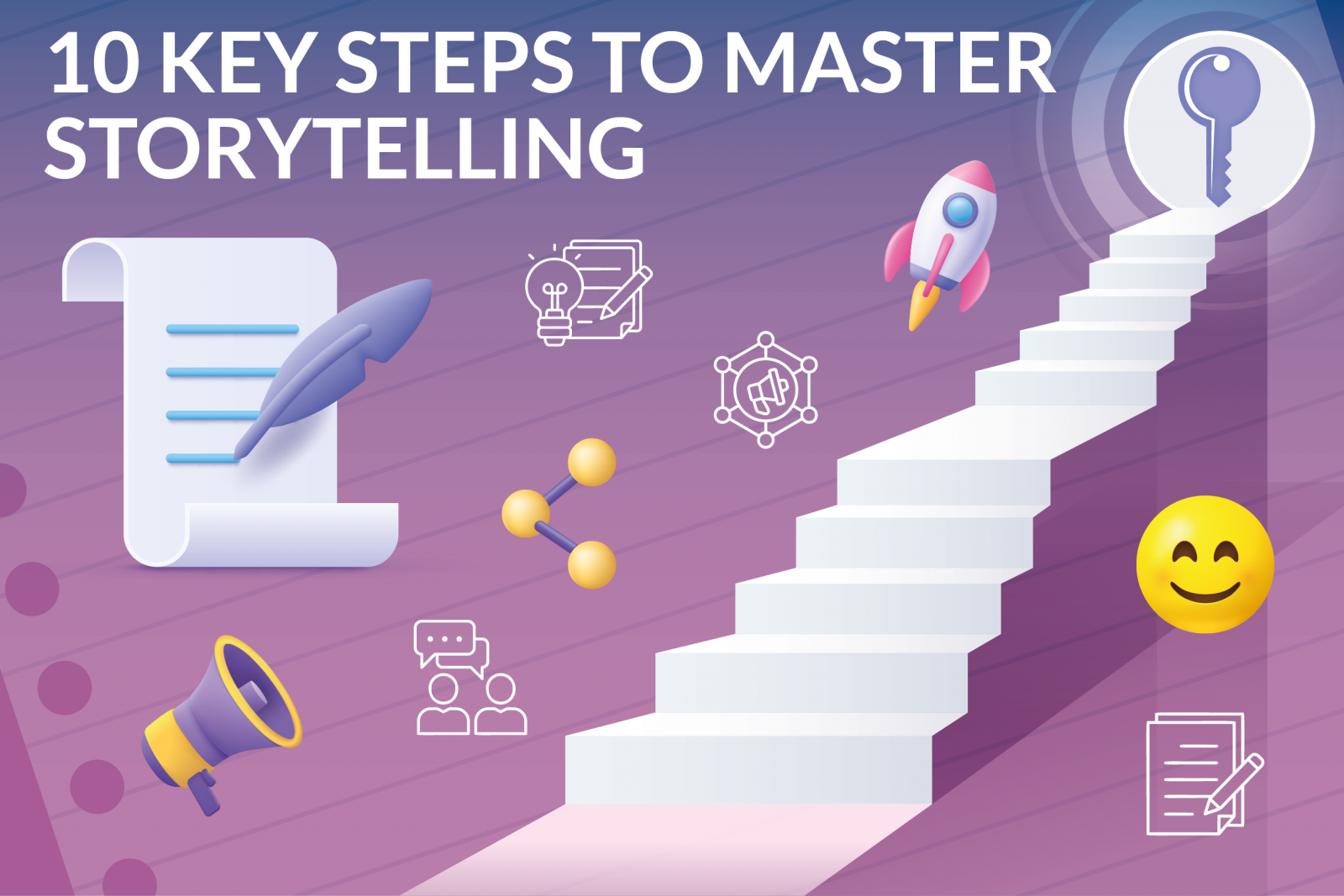10 key steps to master storytelling
Storytelling is the art of using words to build stories and experiences which impact on potential or existing clients and their decision-making by reaching their emotions.
This will encourage users or clients to take the actions we want them to take.
It’s been a powerful and successful marketing strategy in recent years and remains one of the most important actions that brands include in their integrated marketing campaigns.
But if you think that storytelling is just about writing (telling) stories, you’re very wrong. The main purpose of storytelling is to grab the customers’ attention and influence their buying decisions. What are the best tips for this?
We’ve got a few here for you.
Content must be:
-
Interactive: Your target audience must respond and engage. It’s the first step to building a trusting relationship.
-
Imaginative: Words need to turn into visuals in the customer’s mind, like painting a picture. Stories will feed directly to their minds, in an attempt to connect their emotions with the brand. Remember: images tell powerful stories.
-
Educative: We’ve gone through this before. If you only try to sell, you won’t succeed. You need to connect with your audience, with your community, with your clients and with your prospects. Offer them what they need, and they’ll trust you. You’ll be the authority in the field that they’ll look for when they have questions and look for answers.
How can I build a powerful story for my audience?
There are a few basic steps before you start:
-
Understand your audience: Before crafting your story, identify your target’s pain points, challenges and goals. Tailor your story to their needs and aspirations. E.g.: Letting agents won’t have the same concerns as estate agents.
-
One USP at a time: The USP will determine what sets you apart from your competitors. You might have more than one product or service and more than one target audience. Focus on one USP at a time. Your message will be clearer and more effective. Segment as much as you can. This will result in tailored stories (hence, solutions) to specific needs.
-
Work in an engaging narrative: Follow the classical structure: beginning, middle and end, which will match with a relatable character, scenario or pain point (beginning), conflict or challenges (middle) and solution or successful outcome (end). This is possible even in small formats like banners or text link ads.
-
Showcase successful case studies: In the B2B industry, and particularly in the property industry, for both agents and suppliers, success stories and case studies are massively valuable. Highlight clients that have achieved positive results through your services. Emphasize the problems they faced the solutions you provided and the positive impact on their business. This usually makes excellent sponsored content articles. Your audience needs some reassurance, and they need to know they’re choosing the best supplier for their business.
-
Use multiple channels: Do not think that storytelling is only a tool suitable for blogs and written content. Storytelling is a marketing tool that can be used in any campaign, in any channel, including your website, social media, email campaigns, videos (we’ve been mentioning banners, too) Different formats can cater to different preferences and reach a broader audience - don’t be afraid to test what works best for your story! It’s all about testing.
-
Use visuals: A picture is worth a thousand words. And they’re proven to be more engaging and memorable. Visual elements can help convey emotions and complex concepts or ideas more effectively. For certain channels, like social media, it will be the only way to catch attention and generate engagement.
-
Focus on emotions: In B2B marketing, as in B2C marketing, decisions are often influenced by emotions, as well as logic. Connect with your audience on an emotional level through your storytelling, showing empathy and understanding for their challenges.
-
Be authentic and transparent: Clients appreciate honesty and authenticity. Be transparent in your storytelling and avoid making unrealistic claims about your products or services.
-
Involve your team: Humanise your brand by featuring key members of your team in your stories. This adds a personal touch and demonstrates the expertise and dedication of your staff. Birthdays, work anniversaries, charity challenges, remarkable professional achievements - let the industry know about them!
-
Measure and adapt: Use analytics and feedback to measure the impact of your storytelling efforts. Analyse which stories resonated the most with your audience and adapt your approach accordingly.
By incorporating storytelling into your marketing strategy for your business within the property industry, you can create a lasting impression, build meaningful and emotional connections and establish your brand as a trustworthy and reliable partner.
If you’re unsure about how to include storytelling in your integrated marketing campaign, we’ll be happy to help!
Email us at lee@angelsmedia.co.uk or call us on 020 8663 4989 and we’ll be in touch soon!
